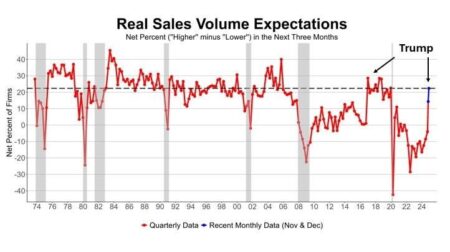Jodi Daniels is a privacy consultant and Founder/CEO of Red Clover Advisors, one of the few Women’s Business Enterprises focused on privacy.
What if professional chefs sent out new dishes without tasting them first?
Yes, the José Andréses and Kristin Kishes of the world seem to nail every dish out of their kitchen. But without quality checks, even the most well-seasoned chefs could serve something overly salty or missing a key ingredient.
In short, quality checks matter. The same goes for your privacy program. Professional kitchens need to sample and tweak their menus, and privacy programs require regular testing and refinement to stay aligned with business goals and regulatory requirements.
Why Privacy Metrics Matter
In my experience, privacy metrics are one of the best ways to understand and optimize your privacy program. Metrics can help you identify strengths, weaknesses and areas for improvement, such as staying ahead of regulatory changes by allowing you to monitor compliance requirements and adjust your practices proactively. These measures can reduce the risk of penalties and strengthen your reputation for responsible privacy practices.
Privacy metrics can also help you optimize your response strategies by analyzing incident response times and training outcomes. For instance, if certain issues repeatedly cause delays, you might update staff training or revisit the tools you use to support privacy activities. I’ve also found that understanding which privacy initiatives deliver the most impact can help with allocating budget and personnel more efficiently.
What Privacy Metrics Reveal About Your Business
Analyzing privacy metrics can shed light on several critical areas:
• Efficiency And Cost Savings: How effectively are you streamlining or automating data privacy processes? Are there opportunities to save resources?
• Impact And Effectiveness Of Privacy Programs: Are you achieving your privacy program’s goals? Is risk being well-managed, or is there room for improvement?
• Incident And Risk Management: Can you demonstrate reduced privacy incidents and minimized compliance risks? Is your legal team facing fewer headaches?
• Employee Awareness And Culture: How well are employees educated on data privacy? Are there signs of increased awareness or new initiatives stemming from privacy training?
Whether your results are overwhelmingly positive or identify areas for improvement, metrics give you actionable insights to guide your next steps.
How To Measure Privacy
Types of Metrics
A privacy program’s performance can typically be measured using three types of metrics:
• Counting Metrics (Activity-Based): These metrics track the volume of privacy-related activities, such as number of assessments completed, number of data subject requests (DSRs) processed, average time to process requests, and number of privacy incidents managed in a specific time frame. Their purpose is to provide a snapshot of ongoing efforts. However, they may not reflect the actual impact.
• Outcome Metrics (Impact-Based): These measure the effectiveness and impact of privacy initiatives. For example, they may measure reductions in phishing email clicks post-training, increases in early privacy impact assessments, and decreases in last-minute project changes due to early privacy involvement. Outcome metrics can offer deeper insight into the program’s effectiveness, but they may require more analysis.
• Trend Metrics (Time-Based): These metrics measure changes and patterns over time, such as the number of privacy incidents, opt-in/opt-out rates for data sharing, and patterns in the types of DSRs received.
Using a combination of metrics can give you a well-rounded view of your program’s health. For example, a high training completion rate might seem impressive, but if phishing incidents don’t decrease, it likely indicates a need to reassess the training content.
Categories Of Privacy Metrics
Within the privacy industry, there are seven key categories of metrics. I’ve found that each one is important for evaluating different aspects of a privacy program.
1. Individual Rights: The focus here in on how well your business manages DSR requests and privacy complaints. Typical metrics include the average response time to requests, percentage of requests fulfilled within legal deadlines, and number of privacy complaints received and resolved.
2. Training And Awareness: This category focuses on the effectiveness of your employee privacy training and organizational knowledge. It factors in areas such as the percentage of employees who completed privacy training, their post-training assessment scores, and any reduction in privacy-related incidents after training.
3. Commercial: This focuses on vendor compliance, data processing agreements, and technology adaptation. Metrics may include the percentage of vendors assessed for privacy compliance, the number of data processing agreements updated annually, and the time to integrate privacy requirements into new technologies.
4. Accountability: This category measures adherence to privacy policies and completion of privacy impact assessments. It focuses on metrics such as the number of privacy impact assessments completed, the frequency of privacy policy reviews and updates, and the percentage of projects involving the privacy team from inception.
5. Privacy Stewards: This focuses on implementation and management of privacy across the organization. Metrics can include the number of active privacy champions in various departments, the frequency of privacy-steering committee meetings, and privacy incident rates by business unit.
6. Compliance And Regulatory: This category accounts for your compliance with data privacy laws and regulations. Metrics may include the number of regulatory inquiries or audits, time spent on compliance activities, and compliance percentage with each applicable regulation.
7. Marketing: This focuses on data-handling within marketing efforts, including opt-outs and cookie management. It checks metrics such as opt-out rates for marketing communications, cookie banner acceptance rates, and data accuracy rates in marketing databases.
Keeping Privacy Metrics Aligned With Business Goals
Your privacy metrics should be tailored to reflect your company’s values and objectives. Here are three ways to ensure effective alignment:
1. Customer-Centricity: If keeping customers happy is a top priority, focus on metrics like how quickly you resolve privacy complaints and on customer satisfaction scores related to data-handling. These insights can show whether your privacy practices are building or breaking trust.
2. Regulatory Compliance Focus: If your business lives and dies by regulatory requirements, track metrics around vendor compliance and your adherence to privacy laws. Staying on top of these numbers can keep you audit-ready.
3. Growth And Expansion: Are you planning to enter new markets? Demonstrating your compliance can be a major plus for your reputation. Metrics in this area can help show that your company is ready to operate in new arenas.
Building A Privacy Program That Evolves
Just as the best chefs continuously improve their recipes, privacy programs must evolve to remain effective. Regularly reviewing and updating your privacy practices is important for long-term success as your business grows and regulations change. Ensure your privacy program is compliant, aligns with your business strategy and contributes to a competitive advantage.
Forbes Business Council is the foremost growth and networking organization for business owners and leaders. Do I qualify?
Read the full article here











